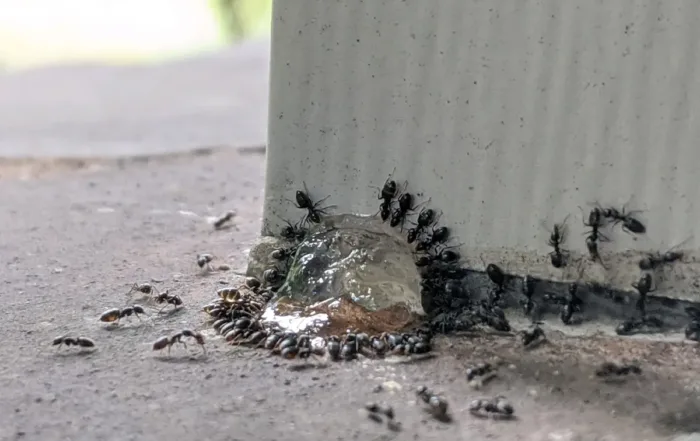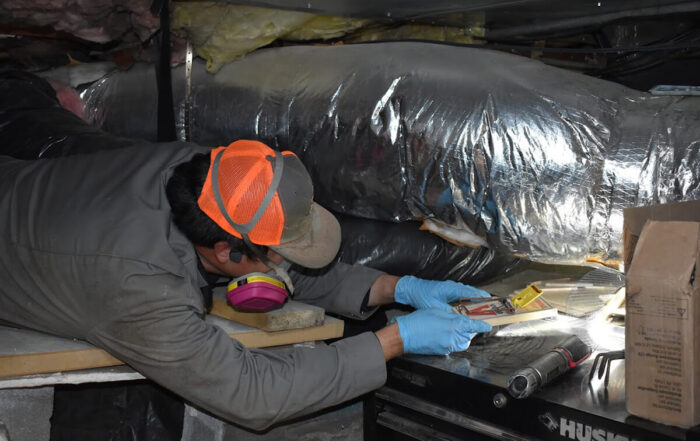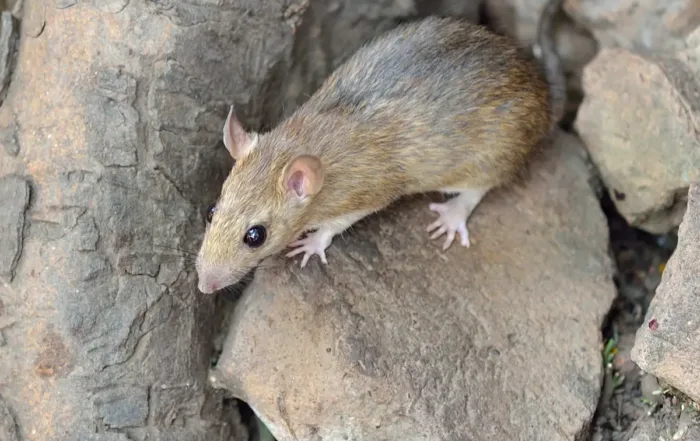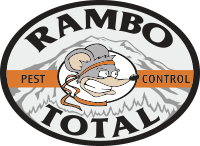by Luke Rambo
Of all the pests we deal with Carpenter Ants are the most interesting, at least according to me. For one thing, they are large enough to visually follow along their trails. If you see a trail during the daylight hours, come back at night with a flashlight and you will see ten times as many! Another reason is they have a very distinctive shape, especially the “major workers”, with their large mandibles and antennae, and all carpenter ants have what is called an “evenly convex thoracic dorsum.” That’s right, everybody say it with me: Evenly convex thoracic dorsum. Meaning the mid-section (thorax) does not have notches or dips, as other ants do along the top side. If you hold a carpenter ant up to view it from the side profile you will see the thorax is evenly round. They are very attractive ants, if you’re into that sort of thing.
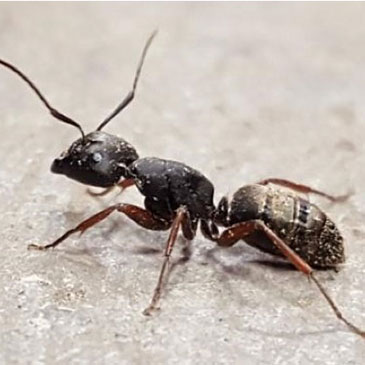
Carpenter Ant with smooth thoracic dorsum
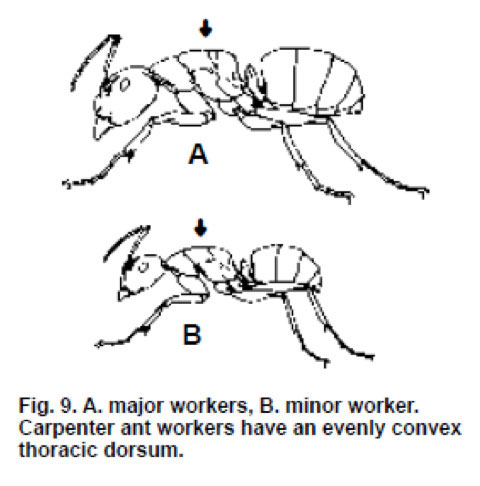
Copied from WSU extension bulletin 0818
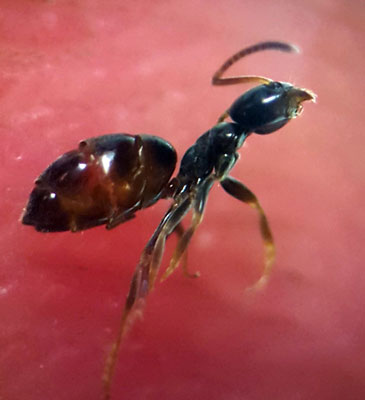
Odorous House Ant with notched thoracic dorsum
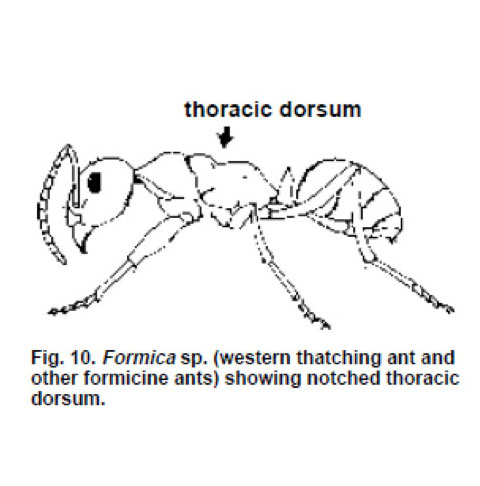
Copied from WSU extension bulletin 0818
With that said they do pose a significant threat to a structure. A Carpenter Ant colony can turn structural elements of a home into swiss cheese in a fairly short period of time. They prefer a moist condition to nest in, but do not require it. There is an old saying in the pest control industry that it’s not uncommon to see Carpenter Ants move into a structure before the carpenters move out. Rarely do you see moisture conditions in a brand new house.
Carpenter Ants are a social insect with designated roles for each individual ant. They have one solitary functioning queen and after she mates once she can continue laying eggs for 20 years. The queen will always nest in a permanently moist location, often in a tree stump or rotting log. That “parent nest” will send out scouts to establish “satellite nests”. These satellite nests are often what we find inside structures. Attics, wall voids, subflooring and other areas of a house make excellent satellite nest locations. The parent nest works together with the satellite nests, ensuring the survival of the colony. They will continue to expand over the course of time, hollowing out wood as they go.
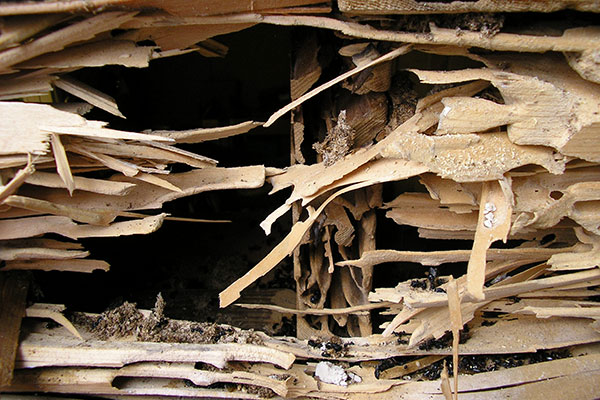
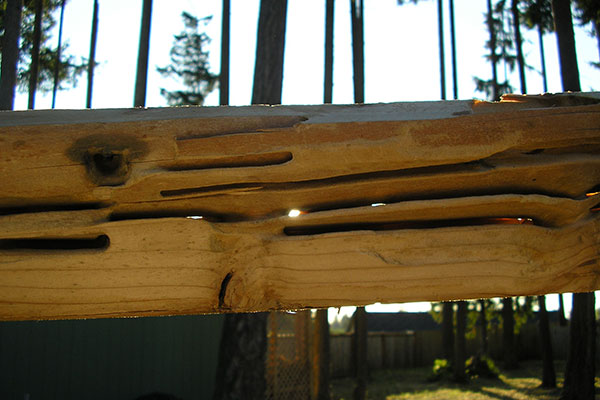
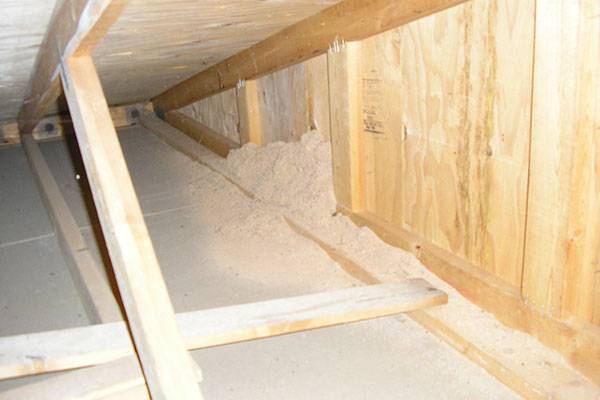
Another interesting Ant Fact is that all worker ants are female. The male ants are present for swarming and mating purposes, but then die off. Both male and female reproductive ants have wings but once the female mates she will break off her wings. If you ever see a very large ant with scars on the top side of her thorax you know that is the queen, or a newly mated queen looking for a place to call home.
Some ant species are what is called polygynous, or multiple queened. Carpenter Ants are monogynous, meaning they only have one functioning queen in the entire colony, typically well protected in the parent nest location. Finding and treating the parent nest can be very helpful to achieve long-term control. Of course, we need to respect property lines and wetland boundaries when selecting our treatment strategy, so even if the parent nest is not able to be located or treated, we can still successfully control and prevent carpenter ants from nesting in your structure.
Be sure to call us ASAP if you see ants trailing toward your house carrying hard hats and hammers, and ask for our Carpenter Ant service. ;) (253) 848-6000, or (866) 540-RAMBO (7262).
